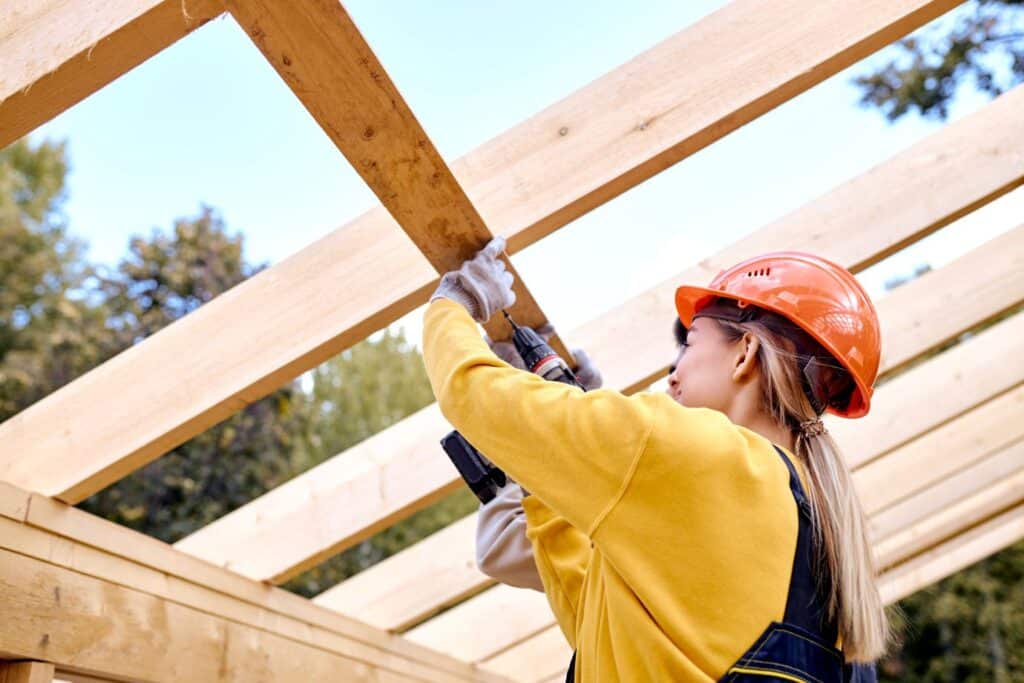Australia is currently grappling with a critical workforce shortage that threatens to stymie the nation’s ambitious housing goals. According to a recent BuildSkills report, Australia faces an urgent need for 90,000 tradespeople within the next three months to address the housing crisis and meet the government’s goal of building 1.2 million homes.
This startling figure not only underscores the severity of Australia’s skilled labour shortage but also presents a unique opportunity to address long standing gender disparities in the trades industry.
Female representation in skilled trades sits at just 3 per cent, indicating a vast, underutilised resource that could play a pivotal role in overcoming this challenge.
Hacia Atherton, founder of Empowered Women in Trades (EWIT), is opening up the doors of opportunity for women to enter and thrive within skilled trade careers, with a goal to increase female representation in trades to 30 per cent by 2030. According to Atherton, as a traditionally male-dominated industry, Australian trades have consistently overlooked women, exacerbating the workforce shortage.
Atherton believes that now is the time for a strategic reevaluation of the workforce, advocating for a gender-inclusive approach that not only meets immediate labour demands but also sets the stage for a more equitable and prosperous future for Australia’s skilled trades sector.
“There is a pressing need to diversify the skilled trades sector and harness the talents of underrepresented groups, including women. By increasing female representation in trades, we can tap into a vast pool of untapped talent and alleviate the strain on the construction industry,” said Atherton.
There is still a long way to go
Bridging the gender gap in Australia’s skilled trades is imperative for further fostering gender equality. While Australia has a proud history of advocating for gender equality, the disparity in skilled trades indicates that there’s still a long way to go.
Reflecting on her recent involvement in the UN Commission on the Status of Women in New York, Atherton said she had time to reflect on Australia’s proud history as a global leader in gender equality, “We were the first country to grant women both the right to vote and stand for parliament…but, when it comes to skilled trades, my pride in our nation dims.”
Women represent a mere 3 per cent of the skilled trades workforce, with even lower percentages in specific trades such as welding, plumbing, and carpentry. This discrepancy not only reflects a significant underutilisation of talent, but also underscores a broader issue of gender inequality within the workforce.
The perception of trades as a “man’s world” is a significant barrier, dissuading them from pursuing careers in these fields despite their interest and qualifications.
“Women do not choose these male-dominated occupations precisely because the culture is dominated by traditional masculine ideologies…This systemic bias perpetuates gender disparities in skilled trades and contributes to the broader issue of gender inequality in the workforce,” said Atherton.
“The outdated patriarchal system perpetuating traditional masculine ideologies not only discourages women from entering skilled trades but also perpetuates alarming rates of mental health issues among men.”
The path to inclusivity
According to Atherton, positive psychology presents a promising avenue for transforming the culture of skilled trades into an inclusive environment where women can flourish. She believes that by systematically dismantling gender stereotypes and fostering inclusive workplaces that celebrate diversity and equality, we can create a supportive atmosphere that empowers individuals of all genders to pursue their career aspirations.
“An effective approach we provide is designing immersive talent attraction programs designed to empower women to explore trades without fear or prejudice…events like our upcoming ‘Introduction to the World of Plumbing Day Provide a welcoming space for women to experience trades, encouraging them to see trades as a viable and rewarding career path,” said Atherton.
Atherton added, “Through education and advocacy, we can address historic resistance to hiring female tradies, break down barriers and open up opportunities for women in the trades”.
Increasing female representation within skilled trades is not merely a matter of gender equality; it is crucial for the economic prosperity of Australian women and the nation as a whole.
Atherton believes it’s time for Australia to challenge outdated gender stereotypes so we can create inclusive pathways for women to pursue rewarding careers in trades, while driving both economic growth and social progress.
“As we once led the world in women’s rights, we have the opportunity to do so again by setting a bold mission to achieve 30 per cent female representation within skilled trades,” she said.
“By dismantling barriers, advocating for change and fostering collaboration, we can create pathways for women to enter and thrive in these traditionally male-dominated fields, strengthening our workforce and driving economic prosperity for all.”
Atherton is urging the government and industry leaders to throw their full support behind the work of Empowered Women in Trades and their Alliance so they can meet their target of 30 per cent female representation in skilled trades by 2030.
Last year, EWIT introduced 5,000 women to the industry, with ambition this year to raise this number to 50,000. This ambitious goal not only addresses our labour shortage, but also lays the groundwork for a future where everyone has the opportunity to contribute and thrive.


